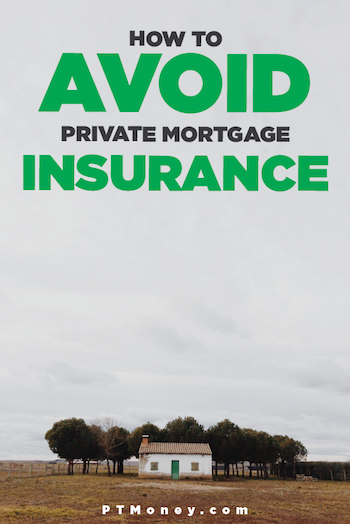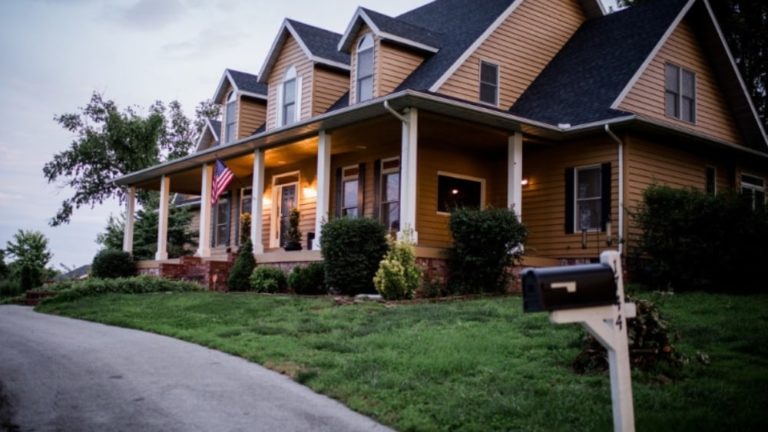The Best Time for You to Refinance Your Mortgage

Falling mortgage rates are a common trigger for homeowners thinking about refinancing their mortgages. After all, one of the strongest arguments for refinancing your mortgage is taking advantage of a lower rate so you pay less for your home mortgage over time.
But the interest rate is not the only factor that you will need to consider. There are a number of issues that you will want to weigh against the potential lower interest rate when deciding on the right time to refinance your mortgage. You will also want to crunch the numbers to make sure you’re making the right decision for your mortgage and budget.
Here’s everything you need to know to decide the best time to refinance your mortgage:
Factors to Consider When Thinking of Refinancing Your Home Mortgage
Here are the major refinancing factors you’ll need to consider, along with some questions you should be asking about each one.
Interest Rate
When interest rates are dropping, it’s natural to start thinking about refinancing to lock in the lower rate. A rate change of just 1% can make a huge difference in the amount of your payment, and more importantly, the amount of interest you’ll pay for the life of the loan. But make sure you ask yourself the following questions before signing on the dotted line:
- What is your current interest rate?
- What would it be if you refinanced?
- Is there a big enough difference between the two?
- Are rates expected to go up in the future?
The best way to ensure you are making an informed choice is to research the current mortgage interest rates for your area and type of loan.
Read More: Best Mortgage Rates for the Self-Employed
Loan Type
What type of loan you currently have and the type that you will refinance with can make a difference in your rate, costs, term length, and other loan features. That’s why it’s a good idea to ask yourself the following questions about your potential refinance:
- Are you moving from an adjustable rate mortgage (ARM) to a fixed rate loan?
- Are you considering moving the loan terms from 30 years to 20 or 15
See Also: Pros and Cons of the 15 vs 30 Year Mortgage
Closing Costs
You don’t want closing costs to be an unpleasant surprise. Though some closing costs can be negotiated, and you can sometimes include the closing costs in the new loan balance, or pay for them by using a higher interest rate, you will still need to prepare for this unavoidable mortgage expense. Make sure you think through the amount of money you will have to pay in closing costs to secure your refinance with these questions:
- How much will it cost you to refinance?
- Do you have this amount available in your short term savings?
- How long will it take you to recoup these costs?
- Will you be in the home that long?
Your Credit Rating
Just because rates have gone down generally doesn’t mean everyone has access to the same low interest rates. Your credit rating can be the difference between a sweetheart rate and a painful one. Make sure you answer these questions for yourself:
- Has your credit rating recently gone up? If it has, you might qualify for a better refinance interest rate now, even if rates aren’t historically low.
- Do you expect your credit rating to go down for any reason? If you think this will happen, you might want to strike while the credit rating is still high.
Your Timeline
Mortgage refinancing is generally a long-term money-saving strategy. That means refinancing needs to fit within your personal timeline for the home for it to make sense financially. Some questions to consider about your timeline include:
- How long do you plan to be in the home and keep the mortgage?
- Will you be there long enough to recoup the closing cost?
- Are you looking to rent your home in the future?
- Will the lower payment allow you to rent it more easily?
Your Budget
Refinancing can sometimes lower your payment and allow you to set more money aside for savings. Refinancing may also increase your payment if you want to get rid of your loan faster and pay less in interest.
If you are considering a refinance to increase the room in your budget, make sure you’re able to float the cost of closing to get to the lowered monthly payments.
Principal You’ve Paid
Consider how much you’ve paid into the loan already. If you’ve paid 20% of your home’s value, you may be eligible for a drop of your private mortgage insurance (PMI) without needing to refinance. But if your current lender won’t drop it, consider a refinance to get rid of it.
Related: Should You Payoff Your Mortgage Early? Yep! Here Are 6 Strategies to Pull It Off!
What You’ll Need to Complete a Mortgage Refinance Calculator
Once you’ve asked yourself the above questions, it’s time to start calculating how a mortgage refinance could affect your bottom line.
There are a ton of free refinance calculators available on the web, and they can all help you get an idea of what to expect from a refinance. I like the features on Bankrate.com’s mortgage refinance calculator.
Here are the items you’ll need to complete the refinance calculation:
Current Loan Amount: Here you’ll enter the amount you borrowed to buy your home. As an example, say you bought a $200k home with 20% down, your original loan amount would be $160K.
Current Interest rate (%): Simply enter the current interest rate on your home mortgage.
Term (in years): Enter the amount of years your original mortgage was for (i.e. 30 years vs 15 years)
Current mortgage balance: This is how much you currently own on your home mortgage. Find your latest bill and look for the balance.
Refinance Interest rate (%): Here you’ll put the interest rate you’ve been quoted on the new loan.
Term (in years): What is your new term? 30 years? 15?
Pre-payment penalty (%): Will you owe a prepayment penalty for paying off your old loan amount a bit early? If you don’t know, call your current lender and find out. This needs to be factored into your decision.
Closing costs on new mortgage:-Closing costs often include a loan origination fee, points, appraisal fee, title search and insurance, survey, taxes, deed recording fee, credit report charge, and other costs assessed at settlement. The closing costs typically run around 2% to 6% of the new mortgage total.
Number of points on new loan: This would be any extra money you are paying to achieve a better interest rate.
Was it Worth it When I Refinanced My Mortgage?
For an example of how refinancing can work, let’s take a look at my mortgage refinance. It was a long, drawn-out process, but it got us a better rate for our 30 year mortgage (less interest owed) and lower payments (more flexibility with our budget and the property).
Here are the details (numbers rounded and approximated at times):
Previous Mortgage:
- Purchased in October 2007
- 30 year, fixed mortgage rate at 6.375%
- Purchased for approximately $207,000
- $42,000 (20%) down
- Total mortgage of $165,000
- Monthly payment $1,028
- $0 in closing costs after seller credits of $5,000
- Paid $39,000 in interest over 3 years and 10 months
- Stood to pay $205,000 in interest over the life of the loan.
New mortgage:
- Closed in July 2011
- 30 year, fixed mortgage rate at 4.875%
- New total mortgage of $159,000
- New monthly payment of $842
- Closing costs of $1,000 after lender credits of $2,000
- Stand to pay $144,000 in interest over the life of the loan.
Note: Current market conditions are such that we would “lose money” on the sale of our home if we tried to sell right now. Therefore, even if we leave the home in the next year, we will keep it as a rental unit.
Interest Savings and Payment Info
By refinancing, we reduced the amount of interest we will pay over the life of these loans by $22,000 ($205,000 – $144,000 – $39,000), which is nice. The way I see it, based on this savings in interest, we need 17 months to recoup the $1,000 closing costs on the re-fi.
Here’s how I got that number:
I spread the interest savings across all of the remaining payment periods. With a 30-year loan, we have 360 payment periods.
$22,000 / 360 payments = $60.
Then, I divided the $1,000 closing costs by $60. That gives me 17, which means it will take 17 payment periods (or months) to recoup the $1,000 we paid in closing costs. If I had sold the town home prior to December 2012, then this would have been a waste.
I know the typical “break even” rule of thumb on a refinance is to take the difference in payments (in this case $1028 – $842 = $186) divided into the closing costs of $1,000, which gives me a break even point of 5.38 months ($1,000/$186=5.38), but I don’t think that tells the true story. My long-term interest savings are the more important savings, compared to the more modest savings in my monthly payment.
See Also: How to Calculate Your Mortgage Payment for a Refinance or Purchase
Why I’m Glad for the Lower Payment
Even though I firmly believe that the interest savings is more important, I’m still glad we got a lower monthly payment with this refinance. Here’s why:
- We increased our monthly budget by $186. ($1,028 – $842). That kind of flexibility is important for navigating self-employment.
- We were on track to outgrow the house. We bought the house with the idea that it might become an investment property in the future. With this new payment, the term “investment” can actually be used. If we rented out our place, we could get $1,500 a month at a minimum. Mortgage payment of $842, property taxes of $350, HOA dues of $175, and insurance of $20, would leave us with a rental unit that cash flows.
Read More: How to Find Investment Rental Properties: Evaluating Real Estate Property for Purchase
Where to Refinance Your Mortgage
While there is no dearth of refinance loans available from both traditional and non-traditional lenders, things can get a little more difficult if you’re self-employed, like I am. Underwriters like to see tax returns dating back two years from those of us without a W-2s. Getting approved for a mortgage using self-employment income is tough these days. Even if you aren’t self-employed, it’s a good idea to shop around for the right refinance loan for you. There are two lenders that I can highly recommend:
Quicken Loans
Quicken Loans was the lender who took care of my refinance, and that was back when I was still a fairly-new solopreneur without multiple years of high-income tax returns. They worked with me to give me a good faith estimate for my interest rate and term, and they helped me through the process of the appraisal, income and asset verification, underwriting, and finally our closing.
Read More: My Refinance Experience with Quicken Loans [7 Simple Steps]
LendingTree
This site is an online loan marketplace, where borrowers can fill out a single form in order to receive multiple customized offers from lenders on the LendingTree network. The borrower pays no fees whatsoever in order to use LendingTree. Depending on which lender you choose, however, you may have to pay an application fee, processing fee, and/or closing costs. This marketplace is an excellent option to ensure you’re getting the best possible refinance loan for your needs.
Final Thoughts
Refinancing your mortgage can be a savvy way to lower your mortgage payment, reduce how much you pay in interest, and lock-in a lower interest rate. But that doesn’t mean a refinance is always the right choice for every homeowner–nor does it mean that every refinance is created equal.
It’s important to make sure you know all of your personal and financial factors that can affect your refinance terms. And it’s smart to do some calculations of what to expect from a refinance before you start contacting lenders.
What’s your experience with a mortgage refinance? Tell us about it in the comments!
Photo by Breno Assis on Unsplash







Thanks…that’s kinda what I thought now. And I’m going to make even larger payments over the next 12 months to knock it down even more.
@Paul – My opinion is that you have a good loan now. And since you are retiring next year, I would wait till then to make any decisions on moving to a 15. By then you’ll have a better idea of your ability to afford the higher monthly payment.
I owe $125,000 on a 30-yr. loan at 5.75%. My monthly payment is $904, but I add $100 to principal each month. I’m trying to determine whether I should just stick to that (at 8yrs of the 30 years) or refi for 15 yrs. I plan to retire next year, but my income will be about 90% of what it is currently. Looking at different calculators I get slightly different results, and just am not sure which is the best route to save money and also pay off the loan.
Good luck on your refinancing quest PT! What duration and rates are you looking at/finding now?
What do you for see as far as real estate values for 2010?
@CharlieM – My hopes are that we see a bounce, especially for our friends on the coasts. I think it will depend on location. Cities like Detroit are going to struggle for a while.
A while back I saw a prediction that real estate values won’t move up until late 2010. But I think that may be too soon to expect anything. The jobs just haven’t come back. When jobs return to normal levels, then wait six months. People will start buying again.
@KC – Well, I hope it comes down a bit more for you, and real estate values go up! 🙂
I considered it under the government’s program to refinance underwater loans (b/c out in here in CA practically everyone is underwater) but the interest rate on it isn’t low enough yet. My current interest is 6.5 and they are offering 5.75 right now, not enough to make it worth it yet. But my lender just said the program was extended another year so maybe the rates will continue to come down, though I don’t hold my breath. I can’t believe .75% doesn’t make a big enough difference but he’s telling us it’d be less than $100/month in savings so it’d take a while to make it worth the closing costs and appraisal. We shall see…
Tell Mrs. PT I said hi! 🙂
Pt,
I am literally dealing with the exact same situation on a smaller scale for my Car. I have 2 options:
http://www.myjourneytomillions.com/articles/experiences-auto-refinancing/
Let me know what you think!
@Dan – Solid advice. I didn’t know that.
@Evan – 18 months is my break even point for closing costs. However, they are giving me the option of bumping up the interest rate and providing a rebate for the closing costs. No current cash outlay, and still a decent rate (5.5%). So, whether I stay 2 months or 20 years, I’m still saving money. The way I see it, the choice is now between the no cash outlay 5.5 and the 5.25 rate with 2500 in closing. I’m leaning towards the former.
PT,
Have you ran the calcs yet to see how long you have to stay in your home before you cross over? I know you said Bankrate, but you also may want to check out DinkyTown (dumbest name but best website ever!)
I can’t refi because I plan on moving within 2 years, and the drop in % won’t make it worth it.
Check if your state is a non-recourse state. Re-financing will generally turn your purchase money loan into a non-purchase money loan, and if you default, the lender may go after you for any deficiency.
Most people don’t plan on defaulting on their loans, but it is something to consider.
Consult your local attorney, as each state is different.